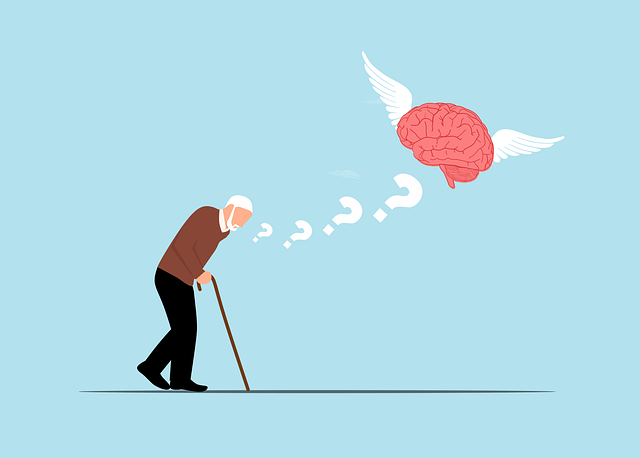Broomfield Adolescent Therapy: Crisis Intervention Strategies for Short-Long Term Recovery
Broomfield Adolescent and Teen Therapy offers comprehensive crisis intervention strategies tailored…….
In the realm of youth mental health, Broomfield Adolescent and Teen Therapy (BATT) has emerged as a transformative approach, offering specialized care for adolescents and teens navigating complex emotional challenges. This comprehensive therapy model goes beyond traditional treatments by integrating various therapeutic techniques, community engagement, and innovative technologies to foster resilience and well-being in younger generations. In this article, we embark on an in-depth exploration of BATT, its impact, and its role in shaping a healthier future for adolescents worldwide.
Broomfield Adolescent and Teen Therapy is an evidence-based approach designed to address the unique psychological and social needs of individuals aged 13 to 19. It draws from various therapeutic modalities, including cognitive-behavioral therapy (CBT), mindfulness practices, family therapy, and motivational interviewing. The core components of BATT encompass:
The concept of BATT has evolved over the past several decades, reflecting growing recognition of adolescent mental health issues. Historically, youth therapy focused primarily on severe cases, often within institutional settings. However, the 21st century brought a shift towards community-based, accessible, and family-inclusive approaches. BATT emerged as a response to the increasing prevalence of anxiety, depression, and other mental health disorders among adolescents, aiming to provide early intervention and prevention strategies.
Its significance lies in its ability to:
Broomfield Adolescent and Teen Therapy has gained global recognition and adoption due to its proven effectiveness and adaptability to diverse cultural contexts. Several countries have integrated BATT into their national healthcare systems, recognizing its potential to reduce youth suicide rates, improve academic performance, and enhance overall well-being.
The implementation of BATT varies across regions, shaped by cultural norms, available resources, and political priorities:
| Region | Trends | Factors Influencing Adoption |
|---|---|---|
| North America | High adoption rate; integrated into public health systems. | Strong emphasis on mental health awareness, robust insurance coverage for youth therapy. |
| Europe | Diverse implementation; some countries have national programs. | Varied healthcare systems, cultural attitudes towards mental health treatment. |
| Asia Pacific | Growing interest; often implemented in urban areas first. | Increasing recognition of mental health issues, investment in youth development programs. |
| Middle East & Africa | Limited but growing presence; challenges with resources and infrastructure. | Growing awareness of adolescent mental health, increasing funding for mental health initiatives. |
BATT’s global reach has led to cultural adaptations to ensure its effectiveness across diverse populations. For example, therapists may incorporate cultural elements from indigenous communities or local folklore into therapy sessions to build trust and enhance engagement. These adaptations ensure that BATT remains relevant and accessible to various cultural backgrounds.
The global adolescent and teen therapy market is experiencing significant growth, driven by rising mental health awareness, increasing adolescent populations, and growing investment in youth well-being. BATT, as a specialized approach, contributes to this market through its ability to:
Government and private investments in BATT are increasing globally, reflecting its perceived value in improving public health and youth development. Funding sources include:
The economic impact of BATT is multifaceted:
Technology plays a pivotal role in modernizing BATT, enhancing accessibility and personalizing care:
Technological advancements have significantly improved access to BATT:
The future of BATT in technology includes:
The development and delivery of BATT are shaped by various policies and regulations that vary across jurisdictions:
Policies and regulations:
Despite its promise, BATT faces several challenges:
Potential solutions include:
Setting: A large metropolitan area facing high rates of adolescent depression and suicide.
Approach: Implemented a comprehensive BATT program, including individual therapy, group support, and community outreach events. Local schools, youth centers, and community organizations collaborated to increase awareness and reduce stigma.
Outcomes: After two years, the program reported:
Location: A rural region with limited access to mental health services.
Strategy: Established a mobile therapy unit, offering BATT services via telehealth and on-site visits to remote schools and communities.
Results:
Context: A high school implementing BATT as part of a comprehensive wellness program.
Implementation: Integrated group therapy sessions and mindfulness workshops into the school curriculum, led by trained counselors.
Achievements:
The future of BATT holds exciting possibilities:
Trends shaping the future of BATT include:
Broomfield Adolescent and Teen Therapy represents a transformative force in the realm of youth mental health care, offering a comprehensive and culturally sensitive approach to supporting adolescents navigating life’s challenges. By integrating evidence-based practices, technology, and community engagement, BATT has demonstrated its effectiveness in improving outcomes and enhancing well-being.
As we look ahead, the future prospects for BATT are promising, with emerging trends and growth areas poised to revolutionize adolescent therapy. Overcoming challenges through strategic partnerships, cultural competence, and innovative solutions will be crucial in ensuring that every young person has access to the support they need for a brighter, healthier future. The global impact of BATT continues to grow, highlighting its potential to shape positive mental health outcomes on an international scale.
Q: What is the primary goal of BATT?
A: The primary goal is to provide specialized therapy and support to adolescents (aged 13-19) to address emotional, behavioral, and social challenges, fostering resilience and overall well-being.
Q: How does BATT differ from traditional therapy?
A: BATT differentiates itself through its comprehensive approach, integrating individual therapy, group sessions, family involvement, community activities, and digital interventions. It also emphasizes cultural sensitivity and adaptability to diverse populations.
Q: Can you explain the role of technology in BATT?
A: Technology plays a pivotal role, enabling remote therapy sessions (telehealth), online support groups, and digital mood tracking tools. AI-driven chatbots and analytics assist therapists in personalized treatment planning, enhancing accessibility and personalization.
Q: What are some signs that indicate an adolescent might need BATT?
A: Signs may include persistent feelings of sadness or anxiety, significant changes in appetite or sleep patterns, social withdrawal, difficulty concentrating, impulsive behavior, or self-harming tendencies.
Q: How can parents support their teen’s therapy journey through BATT?
A: Parents can encourage open communication, create a supportive home environment, attend family sessions (if applicable), and explore community resources. They play a vital role in reinforcing therapeutic skills and fostering a positive therapy experience.

Broomfield Adolescent and Teen Therapy offers comprehensive crisis intervention strategies tailored…….

Broomfield faces rising stress levels among adolescents and teens due to academic pressures, peer dy…….

Understanding mental illness diagnoses is crucial for parents supporting adolescent therapy at Broom…….